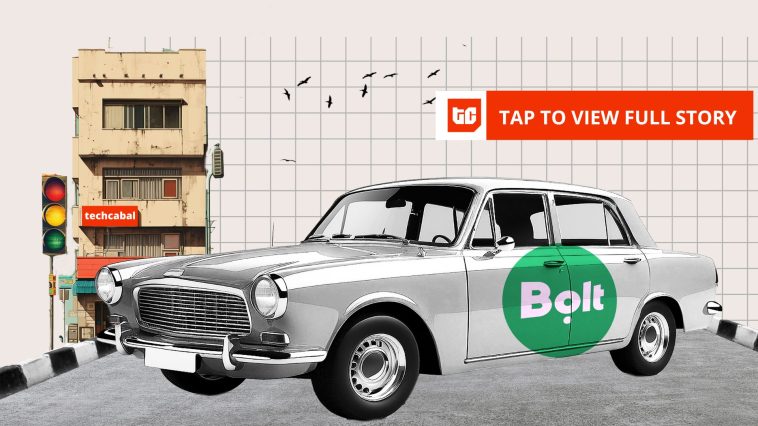Grocery delivery in Nairobi is a smaller market compared to food delivery. Few players, including supermarket chains like Naivas and Carrefour, have ventured into it with varying levels of success. The high cost of delivery — which can cost over KES 100 ($0.77) per delivery — makes it less appealing to most residents, who prefer buying affordable groceries from roadside stalls, popularly known as “vibandas.” However, residents in upscale neighbourhoods, where such stalls are scarce or unavailable, are the primary target customers for online grocery shopping.
Bolt Kenya wants to tap into this business with Bolt Market. The product is integrated into its Bolt Food app. “The move is part of Bolt’s strategy to expand its services, grow its market share, and establish itself as a trusted platform for convenient, on-demand grocery delivery,” Bolt said in a statement in December 2024.
Before COVID-19, in-person dining and in-store shopping were commonplace in Kenya, with online food and grocery purchases limited to early adopters in urban areas. The pandemic spurred a shift that forced retailers to adopt delivery models, partner with platforms, and innovate with options like same-day delivery, driven by consumer demand for convenience and safety.
As of 2023, 9.3% of Kenyans shop for food and groceries online, projected to reach 16.7% or 10.5 million consumers by 2027 due to the demand for convenience and efficient delivery services. Bolt Market is a push to diversify Bolt’s services beyond ride-hailing and challenge established players in a market where speed and convenience are key. This tough market has forced out players such as Jumia Food, which ceased its food delivery business in Kenya and other African market due to unprofitability and stiff competition.
Bolt Market believes it can do things differently but has adopted a cautious approach. Grocery delivery is a tough business with pain points such as high delivery costs that discourage price-sensitive customers and competition from rivals like supermarket chains (Naivas and Carrefour), Glovo, and Uber Eats.
Bolt is currently offering Bolt Market in Nairobi’s upscale Kilimani area and targeting customers within a 10-kilometre radius of its store, including Upper Hill, South C and Riverside. Customers using the Bolt Food app can order groceries from 8:00 AM to 11:00 PM or schedule deliveries 24 hours in advance.
“The high demand for fast and convenient delivery services makes it an ideal location for a central delivery hub,” Edgar Kitur, Bolt Food’s General Manager told TechCabal.
As part of the test, Bolt is offering free delivery within a 3-kilometre radius and discounts of up to 80% to navigate aggressive pricing and more affluent rivals.
Bolt Market’s circumspect launch reflects the harsh realities of the logistics business in Kenya, where similar businesses have failed. With many consumers preferring affordable “vibandas,” the market is niche and relies on upscale areas where convenience and reliable service outweigh cost concerns.
“Our average order value is between KES 300 ($2.32) and KES 38,000 ($293.78), varying by user to local pricing differences,” Kitur added, signifying an affinity for high-end customers.
Thus, Bolt’s cautious launch in Kilimani is designed to gather data on service efficiency, customer satisfaction, and market viability before it can take the next step. “The Kilimani store will provide sufficient data to evaluate service efficiency, customer satisfaction, and market viability,” Kitur added.
High delivery fees in Nairobi discourage many potential customers, especially outside high-end neighbourhoods, where a KES 100 ($0.77) delivery fee could buy a kilo of tomatoes. Joseph Makau, a frequent delivery app user, told TechCabal that customers who might consider grocery deliveries often prefer bundling groceries with other items from supermarkets.
“I would rather do my monthly shopping with groceries on top from the supermarket instead of ordering groceries alone,” the same user said.
“Carrefour doesn’t charge for deliveries for large orders. For small orders (capped at anything more than KES 1,000 ($7.73)), they charge KES 129 ($1) only,” Kariuki, another customer who uses rivals like Naivas and Carrefour interchangeably, told TechCabal.
At least five customers who have used grocery delivery services once or twice told TechCabal that they liked ordering from home, comparing prices, and accessing personalised offers. However, some find delivery charges high, especially if they are far from stores. To address this, restaurants and retailers have since introduced same-day delivery, timed purchases, and buy-and-collect to expand choices and convenience.
Bolt Market claims it has access to over 2,000 products, including fresh produce from local suppliers, household essentials, and beverages. While it did not specify partners, it sources groceries locally to ensure supply consistency, employs AI logistics for delivery optimisation, and enforces quality checks throughout.
Bolt Market is also exploring new pricing strategies, such as discounts based on order size and distance, and hinted at future subscription plans to offer regular customers predictable pricing and cost savings. Subscription models benefit logistics firms by providing steady revenue and improving demand forecasting.
“Indeed, while delivery costs are a major concern for customers, our platform addresses a wider array of operational challenges vital to the overall experience,” Kitur said.
Expansion beyond Kilimani to estates like Parklands, Eastleigh, and Lavington is planned, with a later rollout outside Nairobi in the pipeline. However, there are no set timelines. For now, Bolt Market will use data from Kilimani to refine its service and determine customer response to pricing in a competitive and price-sensitive market.
“As the service expands, we may also explore subscription plans for regular users,” Kitur hinted. Subscription models save customers money through discounts and predictable pricing. Logistics firms benefit from steady revenue and better demand forecasting.





GIPHY App Key not set. Please check settings